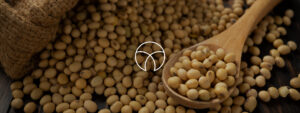The plant-based sector remains sleepy and somewhat slow. Many are still just looking around, or, as we wrote recently, kicking the tires, although it must be said that there are early signs of a turnaround. We see several factors currently having the biggest impact on buying decisions (or lack thereof).
First, we are deeper and deeper into a time of year when consumers (and other living creatures) are consuming more sugary drinks and ice cream. Certainly, manufacturers of these products, whose inventories are not large enough to go an entire season without purchases, will soon be responsible for noticeably increased market traffic.
Second, many purchasing managers have certainly already begun planning for the vacations. Consequently, they have already started, or will soon begin, to make increased and more frequent purchases to secure their business for the period when they disappear for a few weeks during the summer.
Of course, there is also the possibility that the genuinely interested buyers have looked at what they were supposed to look at, examined the samples they were supposed to examine, kicked the tires they were supposed to kick and are about to make actual purchases, which will also have a positive impact on the market.
Native Starches
As the trends we are observing in the market show, Native Starches are now being used to a large extent to produce Modified Starches. As for the situation with certain products, Native Corn Starch is in great demand. Once again, numerous inquiries have been received for this product, with potential buyers interested in both small bags and other types of packaging. It appears that the increased demand is due to its use in FMCG production. Native Wheat Starch may not arouse as much interest, but its availability on the market is definitely satisfactory.
Modified Starches
The demand for starches is currently directed primarily at Modified Starches. In this category, it remains high and has been growing for some time. We receive inquiries from sauce manufacturers, among others. The varieties most in demand are those intended for cold applications, which are in very short supply on the market. We receive requests for various types of E1442 and E1422. Many people also ask for Modified Tapioca Starch.
Proteins
Vital Wheat Gluten is proof that the tire-kicking season we recently wrote about is not over yet. There are more and more inquiries about this product. Far more people are asking for samples and availability than are actually willing to sign contracts. At the same time, it looks like some people are willing to switch manufacturers whose products they have been using (after checking the quality of the samples, of course) as low prices become more important. Rice Protein feed grade is also in high demand, which is certainly because it is a relatively cheap raw material, considering the prices of proteins from other sources. Pea Protein Concentrate is in high demand, which is due to the fact that stocks of the Chinese raw material in Europe are temporarily depleted and waiting for further deliveries.
Sweeteners
The price of sugar continues to rise due to high demand and problems encountered in supply chains, including border crossings. Some Chinese Dextrose producers are trying to raise prices, which is not easy in a situation where there are delays in deliveries. As a result, it is difficult for them to compete with major European producers. The situation with Fructose is full of extremes: demand is high, but the price remains quite low so far, despite high transportation costs. We receive inquiries about Sorbitol, and it is available on the market, although we are seeing shortages of the European product.
Soy-based raw materials
There is a noticeable shortage of Soy Lecithin Powder (even more so for Lecithin from sunflower). Prices for Soybean Meal increased significantly last week. The question is whether this is just a matter of a few days, or whether this trend will continue.
Europe
Bulgaria has increased its production of sunflower oil
This was made possible by the purchase of Ukrainian seed at attractive prices. As a result, oil production increased to 250-300 thousand tons, while domestic demand was about 150 thousand tons. The number of oil extraction plants in Bulgaria has increased from 4 to 11 in recent years. All these favorable circumstances resulted in the producers not only selling sufficient quantities on the domestic market, but also increasing exports.
The fruit harvest in northern Italy ruined by floods
As a result of torrential rains, more than 20 rivers burst their banks in the Italian region of Emilia-Romagna, causing widespread flooding. Thousands of hectares of farmland have been flooded. It is estimated that up to 15 million fruit trees and 400,000 tons of wheat have been destroyed. Initial estimates put the damage at around 1.5 billion euros. According to experts, it will take years for farmers to recover from the losses suffered.
Ukraine’s corn and wheat exports will decline
Current forecasts clearly indicate that Ukraine’s corn and wheat exports will decline in the 2023-24 marketing year. The reason, of course, is the ongoing Russian aggression. However, the authors of the analysis emphasize that the projected lower harvests and associated lower exports are due not only to reduced acreage, but also to the fact that Ukraine had record-high grain stocks in the previous year with which the data are compared.
The Americas
A (near) record year for Canada
The 2023-24 marketing year is forecast to be the second-largest wheat harvest ever in Canada. Production is expected to be about 35.8 million tons, which would be second only to the 2013-14 production of 37.5 million tons and 6% above the estimated 2022-23 production of 33.8 million tons. The main reason for these optimistic assumptions is the record-high acreage this season.
Brazil wins against the United States
Brazilian corn production and exports have long been on the rise. Both the area planted and the level of technological progress in agriculture are increasing. At the same time, corn production in the United States has been stagnant for years. Consequently, the U.S. must swallow its pride and acknowledge Brazil’s superiority (at least in this regard).
Soybean cultivation is destroying native forests in Argentina
Argentine authorities are facing a serious problem of illegal deforestation to grow soybeans and raise livestock. Although a law regulating deforestation was introduced in 2007, more than half of the deforestation currently taking place is illegal. It may prove extremely difficult to reverse this trend, as some farmers simply view deforestation as a cost of doing business due to low fines in the past.
Asia & Oceania
Indonesia is calling on palm oil importers to change their policies
Recently, many palm oil importers, including countries in the European Union, have imposed import bans on goods that have had forests cut down to produce them. Palm oil producers, among others, have been hit hard by the new regulations. Indonesia, the world’s largest exporter of the commodity, recently called for a change in approach. The new idea is to pay additional premiums for sustainably produced oil instead of boycotting conventionally produced oil. The question of how far importers will be willing to implement such a change remains open.
Australia is preparing for a dry and warm winter
According to the latest forecasts, the likelihood of an El Niño weather phenomenon this year could be double that of last season. If it does occur and brings dry and warm weather, it will reverse the trend of the last three years, when La Niña occurred and brought cold weather and record rainfall that even led to flooding. That does not mean there will not be extreme weather events, but at this point it’s hard to predict anything with certainty.
Pakistan’s wheat imports are on the rise
In recent months, Pakistan has seen a significant increase in both prices and quantities of imported wheat. One of the main reasons for the drastic price increases is Russian aggression against Ukraine. The involvement of two major wheat exporters in the armed conflict has naturally affected prices on world markets. Despite the high prices, Pakistan was forced to increase its wheat imports due to a shortage of domestically produced wheat caused mainly by flash floods that devastated large parts of the country.







